A manufacturing website should do more than exist—it should work as hard as the company behind it. In an industry where precision, efficiency, and reliability are everything, a website must reflect the same principles.
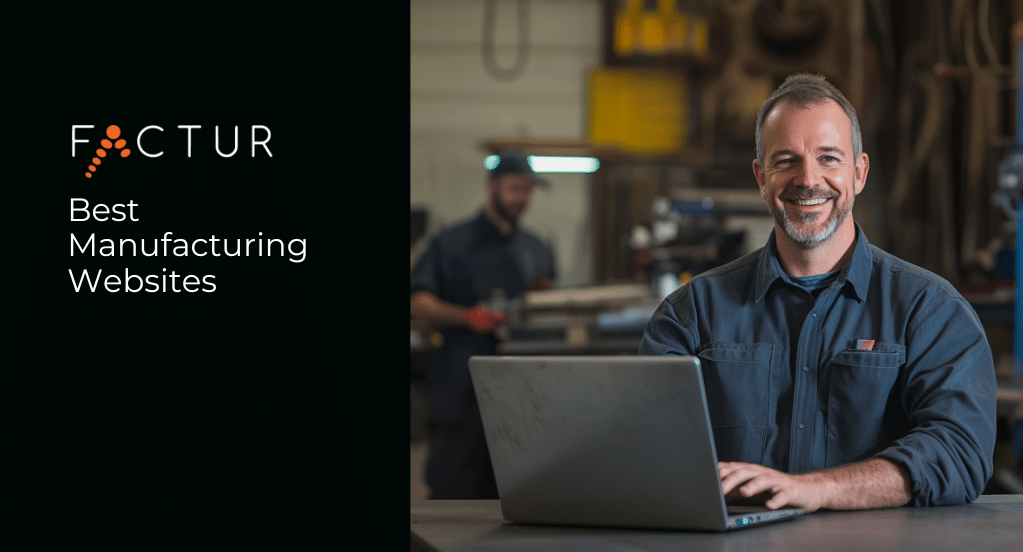
Website design for manufacturers demands a balance of technical precision, clear messaging, and strategic optimization to meet the needs of today’s industrial buyers.
At Factur, we know that the most effective manufacturer websites aren’t just visually strong — they are built to perform. From intuitive navigation and mobile responsiveness to SEO-driven content and strong calls-to-action, every element should work together to move prospects from interest to action.
Let’s dive into the best practices that set outstanding manufacturing websites apart.
1. Hibshman
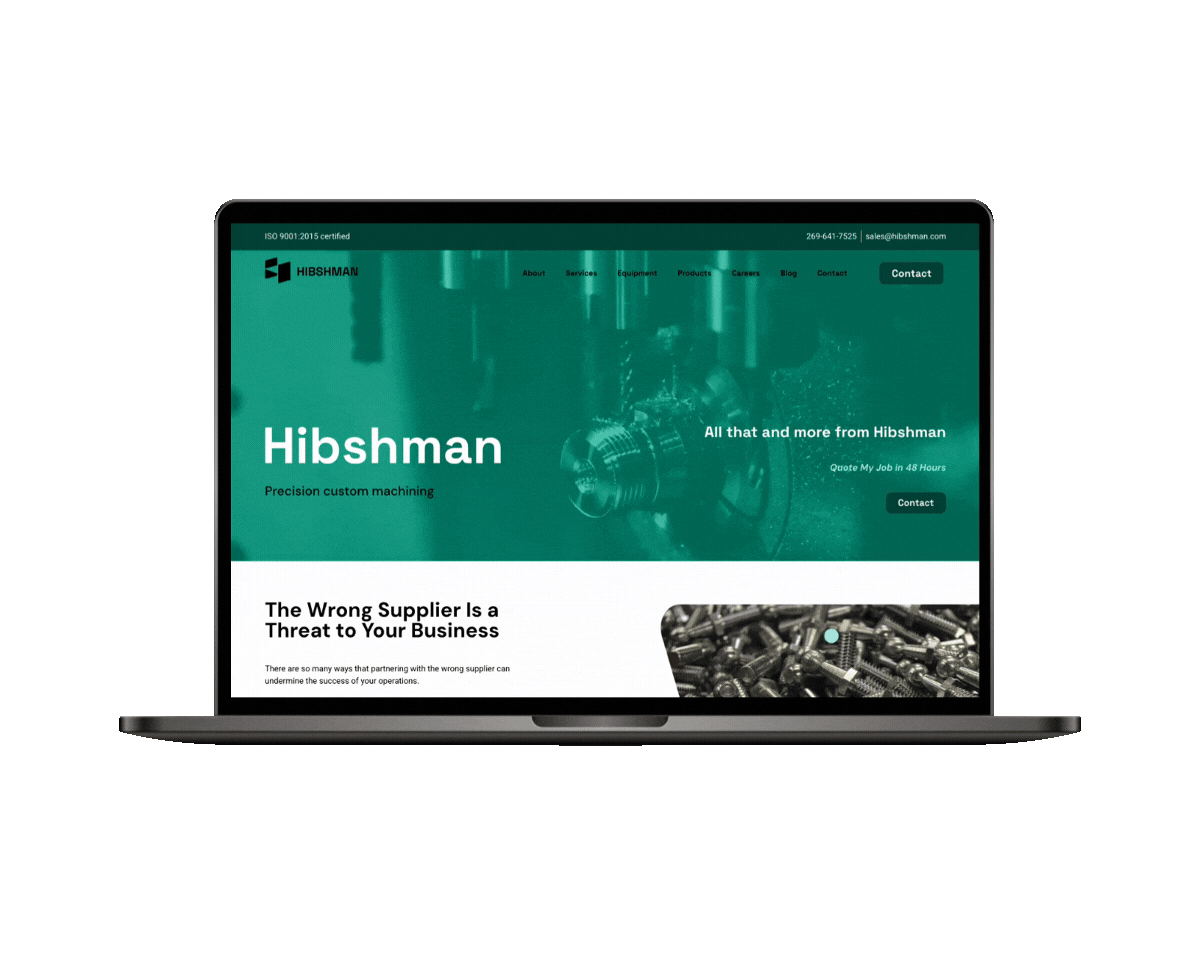
Hibshman is an ISO9001 certified contract manufacturer specializing in precision machined parts, and offering efficient turnaround times from quoting to delivery. This website highlights their state-of-the-art practices, their commitment to customer service, and builds trust with readers by identifying key data proof.
Engaging Layout: Movement and featured data points immediately connect to the users’ attention.
Lead Generation Built-In: Clear calls to action (CTAs) with an expected turnaround time make it easy for manufacturers to request a quote, and trust that they’ll get a timely response. Creating a higher likelihood for submissions.
Clear Metrics for Results: By identifying measurements of quality and quote turnaround times, you can set expectations with prospective customers, and begin earning their trust even before serving them.
2. Whip Industries
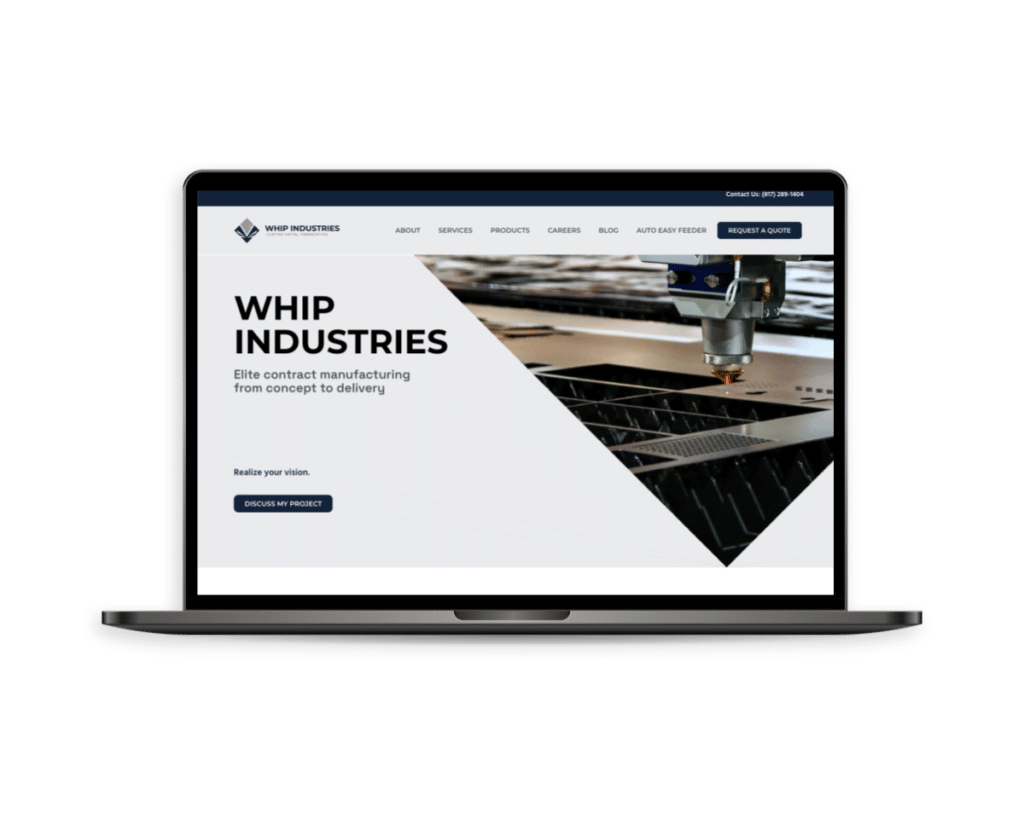
Whip Industries is a trusted locally owned metal fabricator, which has developed a brand and a product around a personal passion for accessibility needs. And the website that they have built, not only communicates the clear skills that they have, but it also offers a personal desire to invest in communities.
Clear Offer: Between the opening statement and the image coupled with the title, it’s clear that Whip is doing laser cutting fabrication in contract manufacturing. Simple, clear, and understood.
Problem Solving in Plain Sight: As soon as it is clear what they have to offer, Whip immediately identifies the challenges they’re overcoming in order to connect with the pain points their customers feel. Not to bring up negativity, but to become the solution to challenging realities that already exist.
Dual User Focus: Whip is making things clear that their main priority is custom fabrication work. But they’ve also not forgotten their secondary audience who are looking to purchase livestock auto easy feeders. A product sold by Whip Industries, though not their main focus, is still something they want to convey. But including a reference in the root navigation but keeping the content simple, they have offered the products without losing sight of the main goal: new fabrication quoting opportunities.
3. MAC-Cable
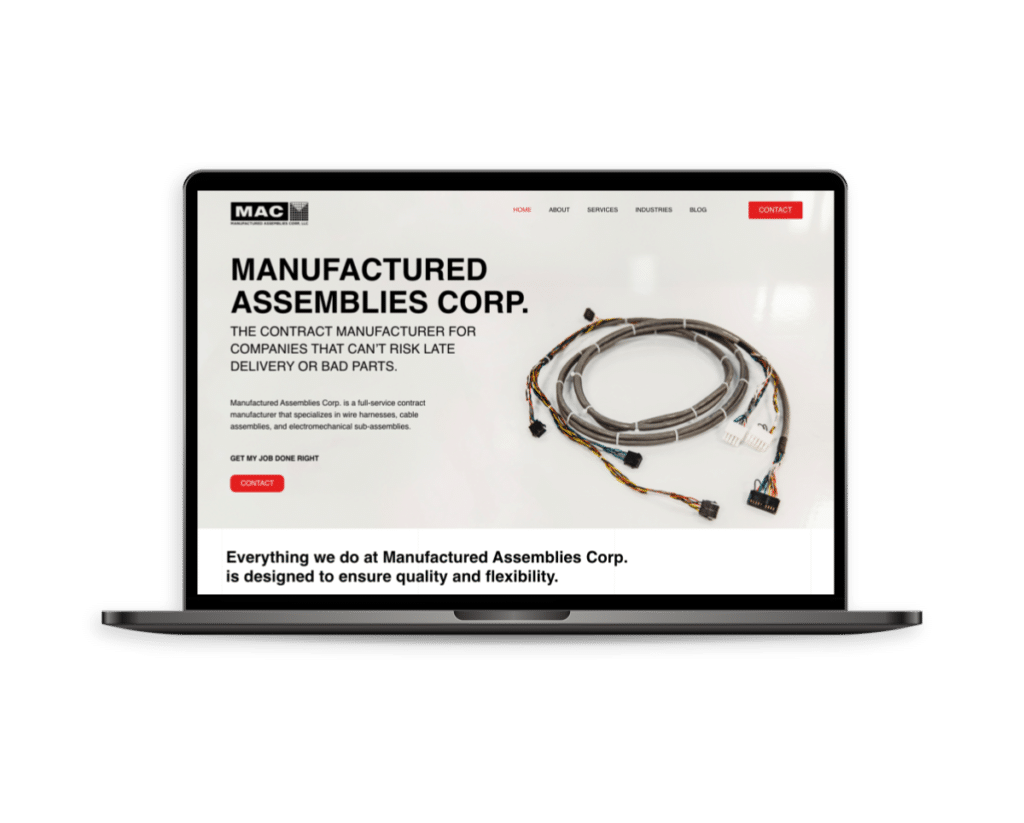
Manufactured Assemblies Corp. plain and simply manufactures wire harnesses, cable assemblies, and electromechanical sub-assemblies. Focus is narrow, and their certifications of expertise are many. Their goal is to instill confidence in their level of expertise and rigid government-regulated practices to attain sensitive contracts.
Trust Signals on the Home Page: By identifying all of their certifications clearly and plainly, MAC-Cable is able to communicate trusted practices and check off required boxes on any new prospective customer.
Identifying Industries Clearly: Having such high levels of certifications means unique opportunities to work with otherwise sensitive industries. By identifying those industries up front MAC-Cable is able to tell a prospective customer, “Don’t worry, we can work with you too.”
SEO Clarity: Having such specific specialties means MAC-Cable can get hyper-specific with their use of keywords like wire-harness manufacturing, and electromechanical sub-assemblies. Terms that not everyone is looking for, but the people who are, are perfect prospective customer opportunities.
4. Metal Services of Blooming Prairie
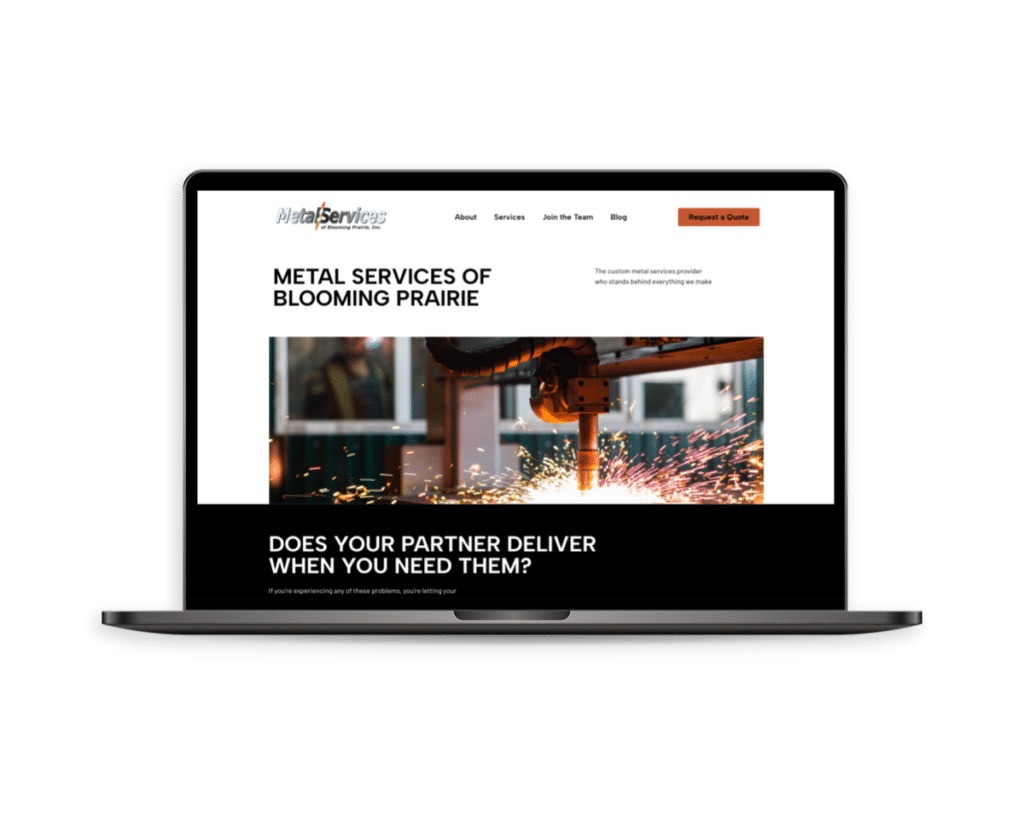
Metal Services of Blooming Prairie is a full-stack metal services provider. A classic down-home manufacturer, who boasts their ability to work with clients through challenging manufacturability. Offering complex services with simple clarity on how to connect.
Clear Path Through a Process: With a clear outline of each step of its process, Metal Services offers a transparent engagement with its prospective customers. Offer understanding before interaction, and drive conversions by telling people exactly what they’ll get.
Strong Visualization: Clear imagery that matches the written content, and high contrast photos and illustrations draw the readers in to continue engaging with the content and convert to a form response.
Optimized Usability: The site is built with very light code, and web-optimized imagery to ensure fast page load speeds, high contrast readability, and keeping the site at peak performance.
5. Sigma Pro Molding
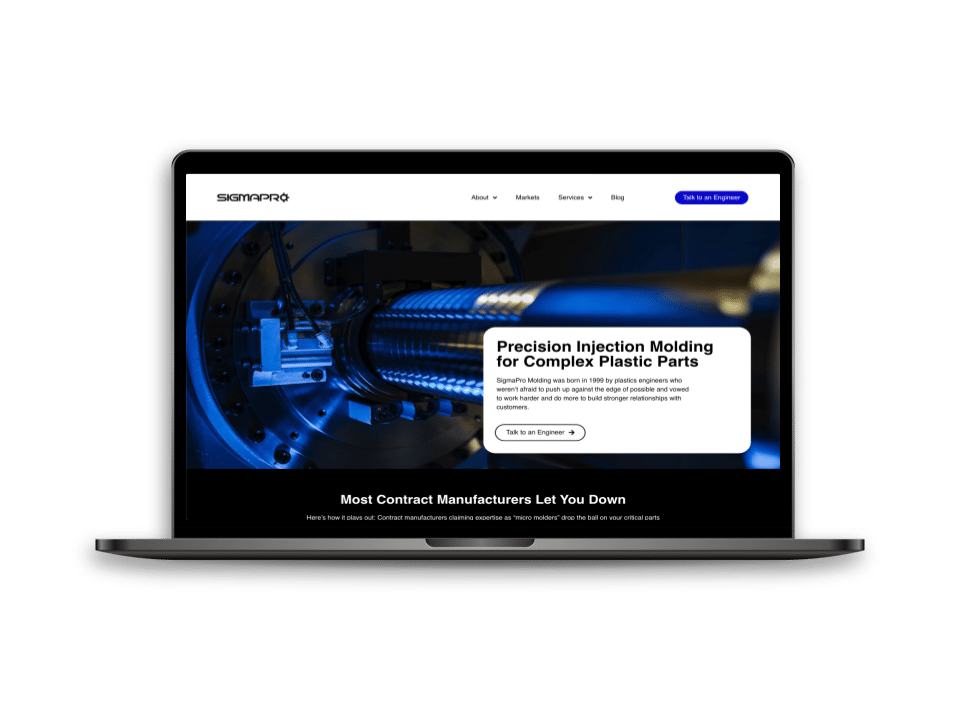
Sigma Pro Molding offers injection molding services for manufacturers, and their website highlights their expertise with strong messaging and an SEO-friendly structure.
Addresses Industry Pain Points: The site immediately speaks to manufacturers’ challenges, such as inconsistent quality in molded components.
SEO Strategy for Niche Searches: By focusing on high-value terms like precision injection molding and contract manufacturing solutions, Sigma Pro improves search rankings.
Lead Generation Built-In: Clear calls to action (CTAs) make it easy for manufacturers to request a quote, helping drive business.
6. IPS Material Handling
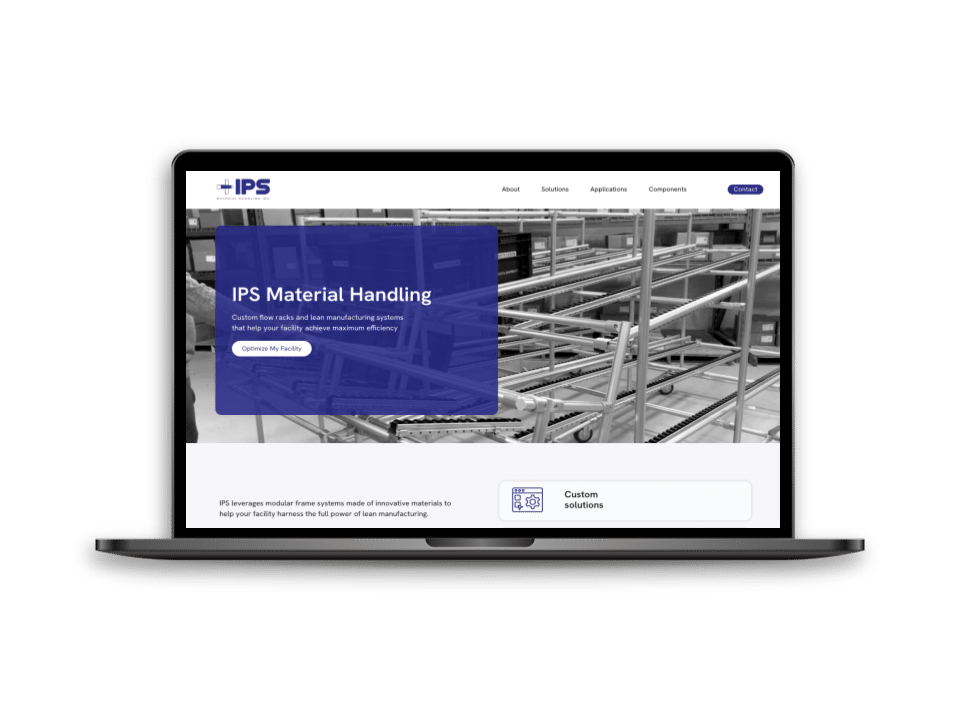
IPS Material Handling specializes in custom material handling solutions, and its website is a great example of industrial website design done right.
Clear Industry Focus: Right from the homepage, it’s obvious from the hero image that IPS serves the manufacturing sector with material handling solutions.
Easy Navigation for B2B Buyers: Their website is structured with manufacturers in mind, allowing website visitors to quickly find information about workstations, flow racks, and other products.
SEO-Optimized Content: IPS uses keywords relevant to their industry, improving their ranking on Google for terms like custom material handling solutions.
7. Fortis Metal Management
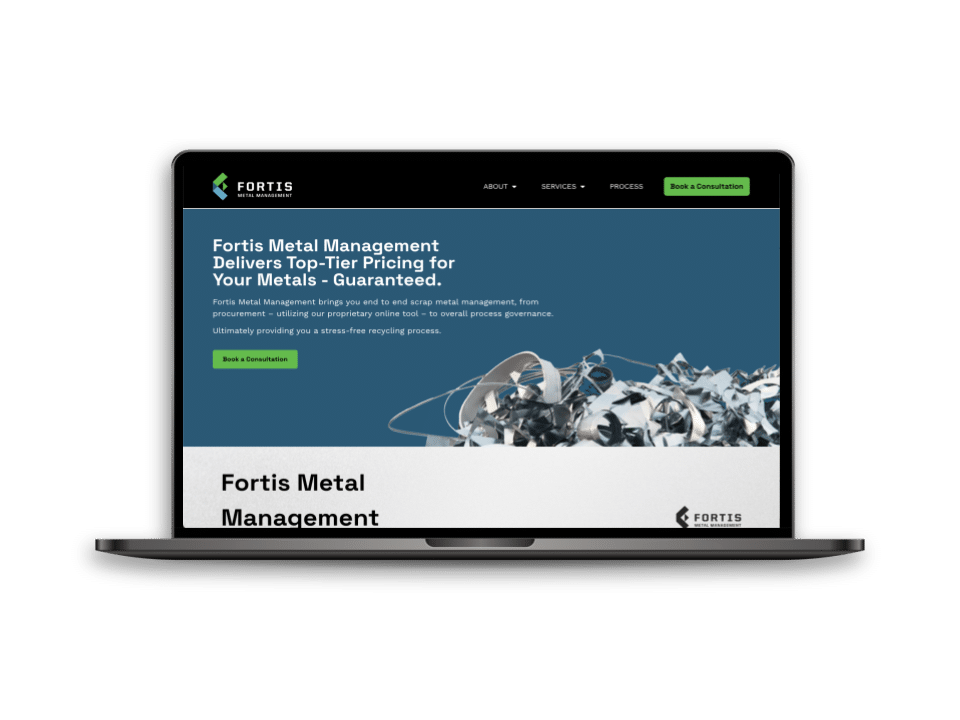
Fortis Metal Management provides an innovative approach to scrap metal recycling for manufacturers. Their website is designed to instill confidence and encourage engagement.
Trust Signals on the Homepage: Fortis emphasizes transparency, pricing guarantees, and their TruMarket system—key factors that manufacturers look for.
User Experience That Converts: The site is built for fast load times, mobile optimization, and clear navigation, making it easy for potential customers to take action.
Keyword Strategy for Search Rankings: By targeting terms like scrap metal governance and manufacturing recycling solutions, Fortis boosts their visibility online.
8. Reata Engineering
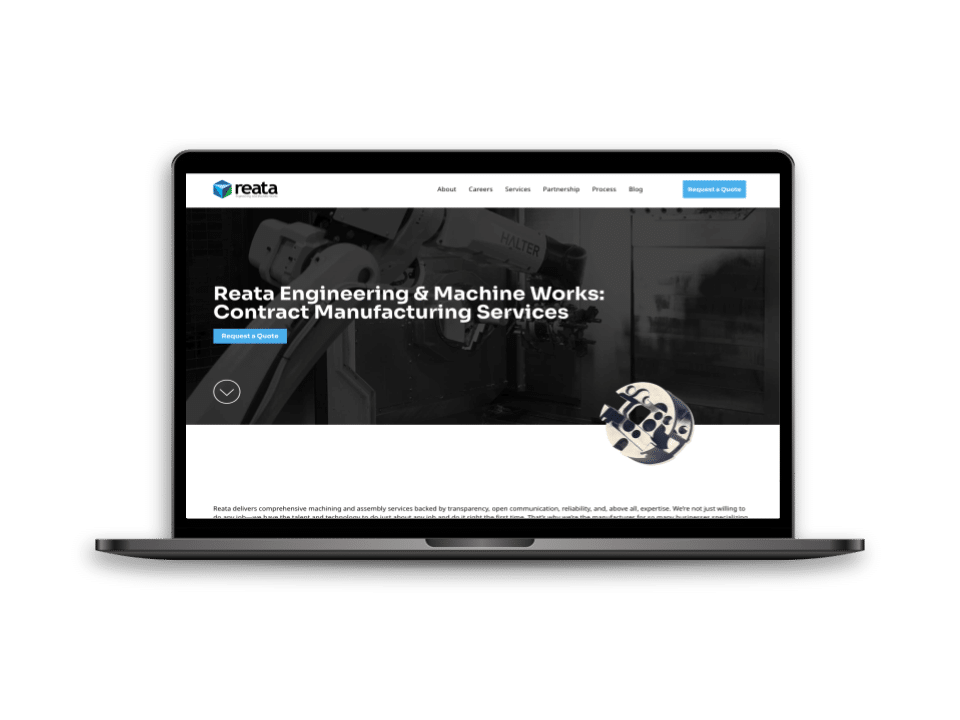
Reata Engineering specializes in precision machining for manufacturers, and their website highlights their industry expertise while keeping things simple for visitors.
Industry Authority Messaging: The homepage establishes credibility by showcasing experience in aerospace, defense, and semiconductor manufacturing.
Optimized for Local & Industry Search: The site is structured to rank for terms like CNC machining for aerospace and high-precision manufacturing services.
Customer-Centric Design: The layout makes it easy for potential customers to understand Reata’s process, request a quote, and contact them directly.
What These Manufacturing Websites Get Right
Each of these top manufacturing websites follow best practices for SEO, user experience, web design, and lead generation. If you’re looking for inspiration for your manufacturing web design, keep these key takeaways in mind:
Best Practices for Manufacturing Website Design
When it comes to building a high-performing manufacturing website, success comes from more than aesthetics. Your site should be built to attract buyers, build trust, and drive real business results. Here are essential best practices for manufacturing website design:
1. Focus on the Right Audience
Your manufacturing website should be built around the needs of your ideal buyers — not just anyone who lands on your page. Identify the industries and decision-makers you serve best, and tailor your messaging directly to them.
2. Keep Messaging Simple and Specific
Clarity is key. Manufacturing buyers don’t want to hunt for information. Your website should immediately explain what you do, who you serve, and why you’re the right choice. Avoid vague marketing language — use real examples, clear benefits, and precise terminology relevant to your industry.
3. Prioritize Lead Conversion Opportunities
Every manufacturing website design should include clear and compelling calls to action (CTAs), like “Request a Quote” or “Contact Us.” Make forms short, mobile-friendly, and easy to complete. The easier you make it, the more leads you’ll generate.
4. Showcase Certifications, Capabilities, and Equipment
Trust is essential in the manufacturing sector. Include your ISO certifications, specialized capabilities, equipment lists, and case studies to show you can meet industry standards and complex requirements.
5. Optimize for SEO with Industry-Specific Terms
To attract more high-quality visitors, your website design should implement manufacturing SEO best practices. Focus on keywords your buyers are actively searching for, like “precision CNC machining,” “custom metal fabrication,” or “injection molding services.” Structure pages with these terms in titles, headers, meta descriptions, and body copy.
6. Build for Speed, Mobile, and Ease of Use
Manufacturing buyers are often on tight deadlines. If your site loads slowly or is difficult to navigate on a mobile device, you risk losing valuable opportunities. Use lightweight code, compress images, and simplify site navigation for a fast, seamless user experience.
7. Tell a Story with Visuals
Strong visuals — photos of your team, facility, and processes — build credibility. Show real operations rather than relying only on stock photos. A clean, visually engaging website layout keeps users moving toward conversion points without distraction.
8. Highlight Your Process
Manufacturers want to understand how you work. Outlining your quoting, production, and delivery processes helps set expectations and makes it easier for buyers to imagine partnering with you.
By following these manufacturing website best practices, you can turn your site into a true growth engine — building trust with buyers, supporting your sales team, and opening the door to bigger opportunities. A strong, high-performing website doesn’t just support your business — it actively drives it forward.
If you’re ready to invest in a website that attracts, converts, and retains manufacturing clients, our website design services for manufacturers can help you build a site that works as hard as you do.
Contact us today to get started.



